The 6922 Rocks!
I (used to) Love This Tube!
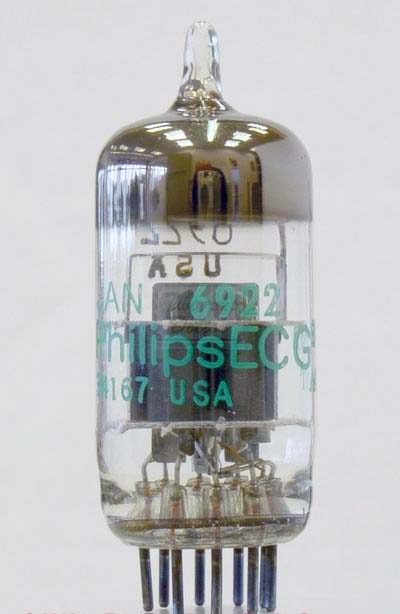
The 6922 or E88CC gives a microphone a tube that can compete well with the old VF14 found in the u47 but it doesn't cost $1200!
Update 2013:
Although everything I say about this tube in this article is true, I have had some reliablity problems with this tube in the ultra-high-impedance world of condenser microphones.
In many 6922 tubes, after they are running for a while, I get a periodic noise that sounds like a soft grinding sound.
Until I find out why this is occurring, I will not be shipping mics with this tube. Such a shame because it has great characteristics.
Update Oct 2013
It looks like the secret to using the 6922 is to just pick the good ones. I am using these tubes again, but it costs me more time and testing. However the results are worth it!
When you want to build the tube preamp for a Large Diagphragm Condenser (LDC) microphone there are some things you look for in your amplifcation device.
- The device must have a very high input impedance.
- It must be very quiet
- It must provide the amplification you require
- It must have a low output impedance
All triodes have the first characteristic but the other three are where you can run into trouble.
I have been using the the vernerable 6072 tube and have been very happy with the results, but I have always wondered how to get the results seen in the u47 and the modern replicas that use the VF14 and EF14 tubes. The u47 class of mics have an internal preamp that exhibits a flat response from 20Hz to 40,000 Hz! This is part of the secret of the u47. An accurate internal preamp allows the pure, un-adulterated sound of the capsule to travel into your gear.
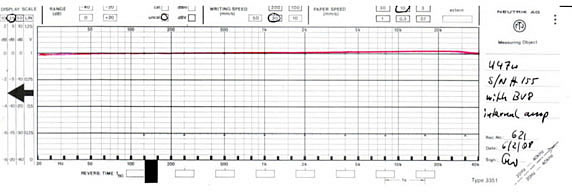
To see the original at Wagner Microphones click here
Click through to the section Called Transfomers, bottom of the page.
I have not been able to do that with a single stage 6072 tube using conventional transformer ratios. The output impedance of the 6072 tube is about 20,000 ohms; just a little too high to drive a 10:1 transformer into the standard 1500 ohm microphone preamp input.(This is why the original m251 and c12 used the T14 transformer which has a ratio more around 12:1)
Other tubes in the family have even quite different output impedances when used in a Plate Follower circuit.
- 12AX7 - 60,000 ohm Zout
- 12AT7 - 10,000 ohm Zout
- *12AU7 - 7,500 ohm Zout
*From all the information I can find, the output impedance of a VF14 wired as a triode is in that range of 7,500 ohms as well.
The 12AT7 can just do the job but tends to be noisier than we want for a microphone and I find distortion is a little higher than we like at high sound levels without negative feedback.
The 12AU7 has the low output impedance but it has very low gain and is typically used as an output stage rather than a preamp input stage, however it can do the job, if you can tolerate lower sensitivity.
This fact has lead to innovative solutions like the two stage CCDA amplifier used in the mics like the APEX 460 and the family. This circuit gives you the desired low impedance ouptut with two stages. A reasonable setup, but I wanted results with a single stage.
I have also used the 6072 dual triode in parallel to reduce the output impedance. It worked a little better and lifted the high end about .3 dB at 20Khz but did not duplicate the u47 amplifier specs.
So after searching for quite a while I came across the 6922. This tube, like the VF14 was designed for use in RF circuits. Hmm... maybe there is something there. I looked into the Plate resistance characteristics and sure enough it was very low. (2,500 ohms) Yes but the noise figure is probably poor , read some more ... no it was built for low noise RF preamps. Ok but it must have a low gain... Amplification factor 33 times. The 6072 is only 44; a 2.5 dB difference. Microphonics must be very bad. Wrong again; it is tested more agressively than the 6072 for microphonics. Hammer test and vibration tests!
So why are they not used more? The only thing I can see is that filament pin out is different than the 12A*7 family. So you can't "plug and play" with these tubes. And as a premium tube they cost a little bit more. So that rules them out in high volume manufacturing.
OK so we broke out the soldering iron and began modifying our FAR 47 GOLD prototype microphone to see what this baby could do...
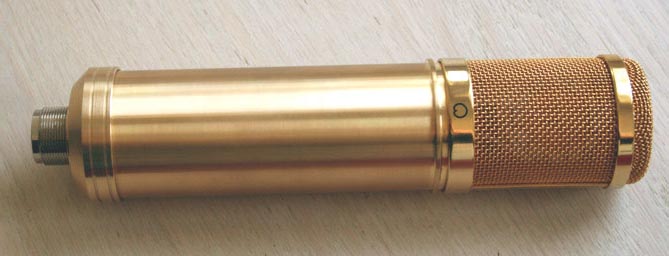
The first thing to say is that the pin out is just different enough that it doesn't work with 6072 wiring but it's only two minor changes. Changes made. Let's power it up.
We put the open microphone into our Faraday cage and hooked up the jumpers to the directly inject the sweep signal into the preamp. Got things calibrated and ran the sweep. When we superimposed it onto the original FAR 47 GOLD sweep for this mic here is what we saw!
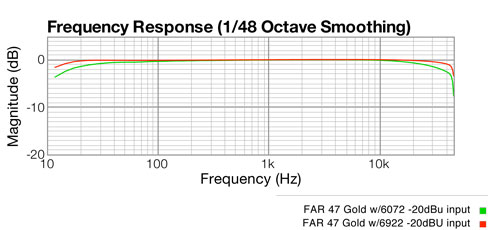
Remember we changed nothing else in the microphone and this mic uses a stock APEX 460 transformer.
Techie Note:
The tube socket is wired so that both triodes are working in parallel. This reduces random "shot" noise another 3 dB. With the 1.15 V fixed bias, the combined plate current went from 555 uA with the 6072 to 840 uA so the 6922 is conducting harder as expected with the lower plate resistance. This changes the operating point of the amplifier slightly but voltage at the plate is now 34V which coincidentally is that same as a u47.
Notice how the low end goes right down to 20 Herz before turning the corner, like a u47. And the top end while not being flat to 40KHz, it is completely flat to 20KHz and only 1dB down at 40,000. This is pretty good for a home studio microphone. And did not take $1200 to do it!
And we see distortion is lower too! Second Harmonic distortion is lower until about 2 Khz where the 6072 is a little better, but the 6922 is very consistent across the audio spectrum. And that nasty non-musical third harmonic distortion is 10 dB lower in that critical 200 to 2Khz mid-range spectrum.
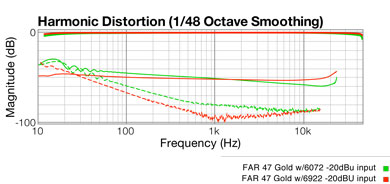
Now the interesting thing about a tube designed for low noise in the Very High Frequency (VHF) radio spectrum is that the bandwidths are so wide. Creating low noise for the bandwidth of 30Mhz to 150Mhz is not trivial. When you take that same tube and require it to be quiet across the relatively narrow audio spectrum, guess what? It is EXTREMELY QUIET. The graph below shows it to be 10 dB quieter from 200Hz to 900Hz than microphones we have built with the 6072; a "low noise" audio tube. And it is 6dB quieter from 1Khz to 10Khz!
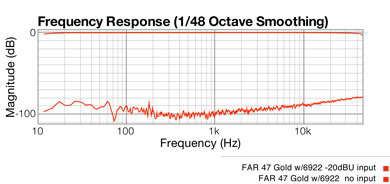
Yes but how does it sound you say? The only word I can use to describe the sound is transparent. It's almost like it's not there. Believe it or not you can clearly hear that extended high end, even with my OLD ears. Sounds sparkle without a trace of dirt. And the extended bottom end means everything is there, perfectly flat, down to the ground, so it takes EQ with no surprises.
I love this tube!
We have a small supply of NOS Philipps 6922s made in the USA.
If you want your mics to be outfitted with this fantastic tube send us a note at:
